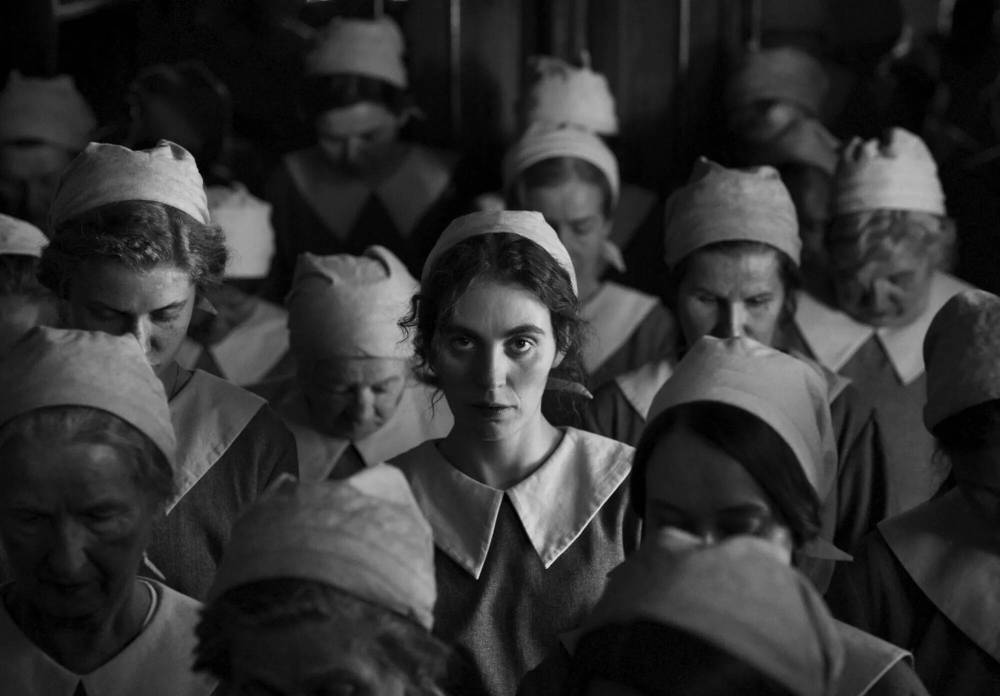Seeing through the dark eye of a piercingly pointed needle
Advertisement
Read this article for free:
or
Already have an account? Log in here »
To continue reading, please subscribe:
Monthly Digital Subscription
$1 per week for 24 weeks*
- Enjoy unlimited reading on winnipegfreepress.com
- Read the E-Edition, our digital replica newspaper
- Access News Break, our award-winning app
- Play interactive puzzles
*Billed as $4.00 plus GST every four weeks. After 24 weeks, price increases to the regular rate of $19.00 plus GST every four weeks. Offer available to new and qualified returning subscribers only. Cancel any time.
Monthly Digital Subscription
$4.75/week*
- Enjoy unlimited reading on winnipegfreepress.com
- Read the E-Edition, our digital replica newspaper
- Access News Break, our award-winning app
- Play interactive puzzles
*Billed as $19 plus GST every four weeks. Cancel any time.
To continue reading, please subscribe:
Add Winnipeg Free Press access to your Brandon Sun subscription for only
$1 for the first 4 weeks*
*$1 will be added to your next bill. After your 4 weeks access is complete your rate will increase by $0.00 a X percent off the regular rate.
Read unlimited articles for free today:
or
Already have an account? Log in here »
Hey there, time traveller!
This article was published 13/12/2024 (296 days ago), so information in it may no longer be current.
“The world is a horrible place,” says one of the characters in this harrowing historical drama (in Danish, with subtitles). “But we need to believe it is not so.”
Loosely inspired by a notorious Danish criminal case, The Girl with the Needle — Denmark’s entry for the Best International Feature Film Oscar — is part relentless social realism and part grim fairy tale. It deals in horrific facts but also in the stories we tell ourselves to cover over those facts.
Filmed in austerely beautiful, high-contrast black and white, the narrative’s moral explorations are purposely grimy and grey, with director Magnus von Horn (Sweat), who co-scripts with Line Langebek Knudsen, probing the ugly intersection of individual pathology and larger societal callousness and cruelty.
Set in Copenhagen in 1919, the story begins with Karoline (Vic Carmen Sonne). Her soldier husband is presumed dead, and she’s just been evicted from their home. Though she works as a seamstress at a textile factory, Karoline makes barely enough to live. A brief affair with her wealthy boss (Joachim Fjelstrup) seems to offer hope for something beyond this precarious existence. Instead, Karoline is left pregnant, abandoned and unemployed.
Karoline’s husband, Peter (Besir Zeciri), does eventually return from the war, but he’s suffering from PTSD and terrible facial injuries that are hidden behind a rigid mask. Karoline becomes increasingly desperate, and she turns to Dagmar (Trine Dyrholm), a seemingly motherly figure who runs a candy shop.
The store is in fact a front for a business that helps women dealing with unwanted pregnancies. For a fee, Dagmar offers to place babies with wealthy families — “doctors, lawyers, those who can afford to do good.”
Karoline is taken into Dagmar’s home, and it’s only when she has become emotionally and psychologically enmeshed in this strange household that she discovers the terrible truth behind these hopeful promises.
This may be a true-crime story, but the narrative structure is unusual and a bit sly. By the time the full immensity of the central crime is revealed, we are caught tight in its grip, along with Karoline.
This sense of claustrophobia is underlined by unsparing, often abrasive performances from the leads. Sonne as Karoline and Dyrholm as Dagmar are both known for uncompromising work, and they have no need to be liked, but they want their characters to be understood.
There are moments when The Girl with the Needle plays like a horror film, with dark, sometimes surreal images that thrum with dread. This sense of uneasiness is sharpened to an almost unbearable point by Frederikke Hoffmeier’s nerve-shredding contemporary score.
At other times, there’s an almost archival accuracy to its period setting, with scenes that call up the early 20th-century photographs that documented the sweatshops and tenements of the urban poor.

Lukasz Bak / Nordisk Film
The Girl with the Needle is part social realism and part grim fairytale.
Von Horn refuses to let us place Karoline’s hardship safely in the past, however. The film’s reminder of what women with few choices can be driven to, its portrayal of the ways marginalized people can be treated with indifference, even contempt — these feel anything but historical.
The story’s sudden, somewhat rushed conclusion involves a criminal trial. Von Horn is clear about the guilt of the accused, but he also condemns the so-called “respectable” folks in the courtroom audience. These are the people, von Horn suggests, “who can afford to do good” but prefer to look away from poverty and deprivation.
Difficult, deeply uncomfortable, The Girl with the Needle demands that we see.
alison.gillmor@freepress.mb.ca

Studying at the University of Winnipeg and later Toronto’s York University, Alison Gillmor planned to become an art historian. She ended up catching the journalism bug when she started as visual arts reviewer at the Winnipeg Free Press in 1992.
Our newsroom depends on a growing audience of readers to power our journalism. If you are not a paid reader, please consider becoming a subscriber.
Our newsroom depends on its audience of readers to power our journalism. Thank you for your support.


